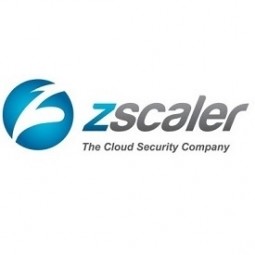Enhancing Web Security and User Experience: A Case Study of County Clerk Office's Adoption of Zscaler

Technology Category
- Application Infrastructure & Middleware - Middleware, SDKs & Libraries
- Cybersecurity & Privacy - Application Security
Applicable Industries
- Electronics
- National Security & Defense
Use Cases
- Tamper Detection
- Time Sensitive Networking
Services
- Cloud Planning, Design & Implementation Services
- Training
About The Customer
The customer in this case study is the County Clerk Office's Information and Technology Services (ITS) department. The department provides technology integration and support services for the County Administrator Departments, as well as other county and government-funded agencies. The ITS team was responsible for managing the county's web security, which was initially handled by Blue Coat appliances. However, as the county expanded its online services, the Blue Coat devices could not keep up with the increased load, leading to frequent crashes and a poor user experience. This prompted the ITS team to seek a more effective and cost-efficient solution.
The Challenge
The County Clerk Office's Information and Technology Services (ITS) department was facing a significant challenge in improving web security, providing a seamless user experience, and reducing IT costs. The department had been using Blue Coat appliances for web security, which initially worked well. However, as the county began to offer more online services such as training and streaming, the Blue Coat devices could not handle the increased load. This resulted in frequent slowdowns and crashes, requiring frequent reboots to maintain functionality. The ITS team was inundated with calls from dissatisfied users, making their approach to web security both frustrating and inefficient.
The Solution
In search of a more effective and cost-efficient solution, the ITS team evaluated several key web security vendors, including Blue Coat, Websense, and Zscaler. They were particularly impressed with Zscaler's cloud-based solution, which offered advanced security protection and low traffic latency. During the test phase, the ITS team routed the traffic of 15 users experiencing the most connectivity issues to the Zscaler cloud using a GRE tunnel configuration. The connectivity problems were immediately resolved, and the users no longer needed to call the ITS team for assistance. Zscaler's advanced security and Web 2.0 features provided a more robust and comprehensive solution than the previous Blue Coat appliances, significantly reducing malware incidents.
Operational Impact
Quantitative Benefit

Case Study missing?
Start adding your own!
Register with your work email and create a new case study profile for your business.
Related Case Studies.

Case Study
Remote Temperature Monitoring of Perishable Goods Saves Money
RMONI was facing temperature monitoring challenges in a cold chain business. A cold chain must be established and maintained to ensure goods have been properly refrigerated during every step of the process, making temperature monitoring a critical business function. Manual registration practice can be very costly, labor intensive and prone to mistakes.

Case Study
Predictive maintenance in Schneider Electric
Schneider Electric Le Vaudreuil factory in France is recognized by the World Economic Forum as one of the world’s top nine most advanced “lighthouse” sites, applying Fourth Industrial Revolution technologies at large scale. It was experiencing machine-health and unplanned downtime issues on a critical machine within their manufacturing process. They were looking for a solution that could easily leverage existing machine data feeds, be used by machine operators without requiring complex setup or extensive training, and with a fast return on investment.

Case Study
Cloud Solution for Energy Management Platform-Schneider Electric
Schneider Electric required a cloud solution for its energy management platform to manage high computational operations, which were essential for catering to client requirements. As the business involves storage and analysis of huge amounts of data, the company also needed a convenient and scalable storage solution to facilitate operations efficiently.

Case Study
Leveraging the IoT to Gain a Competitive Edge in International Competition
Many large manufacturers in and outside Japan are competing for larger market share in the same space, expecting a growing demand for projectors in the areas of entertainment, which requires glamor and strong visual performance as well as digital signage that can attract people’s attention. “It is becoming more and more difficult to differentiate ourselves with stand-alone hardware products,” says Kazuyuki Kitagawa, Director of Service & Support at Panasonic AVC Networks. “In order for Panasonic to grow market share and overall business, it is essential for us to develop solutions that deliver significant added value.” Panasonic believes projection failure and quality deterioration should never happen. This is what and has driven them to make their projectors IoT-enabled. More specifically, Panasonic has developed a system that collects data from projectors, visualizes detailed operational statuses, and predicts issues and address them before failure occurs. Their projectors are embedded with a variety of sensors that measure power supply, voltage, video input/ output signals, intake/exhaust air temperatures, cooling fan operations, and light bulb operating time. These sensors have been used to make the projector more intelligent, automatically suspending operation when the temperature rises excessively, and automatically switching light bulbs. Although this was a great first step, Panasonic projectors were still not equipped with any capability to send the data over a network.








